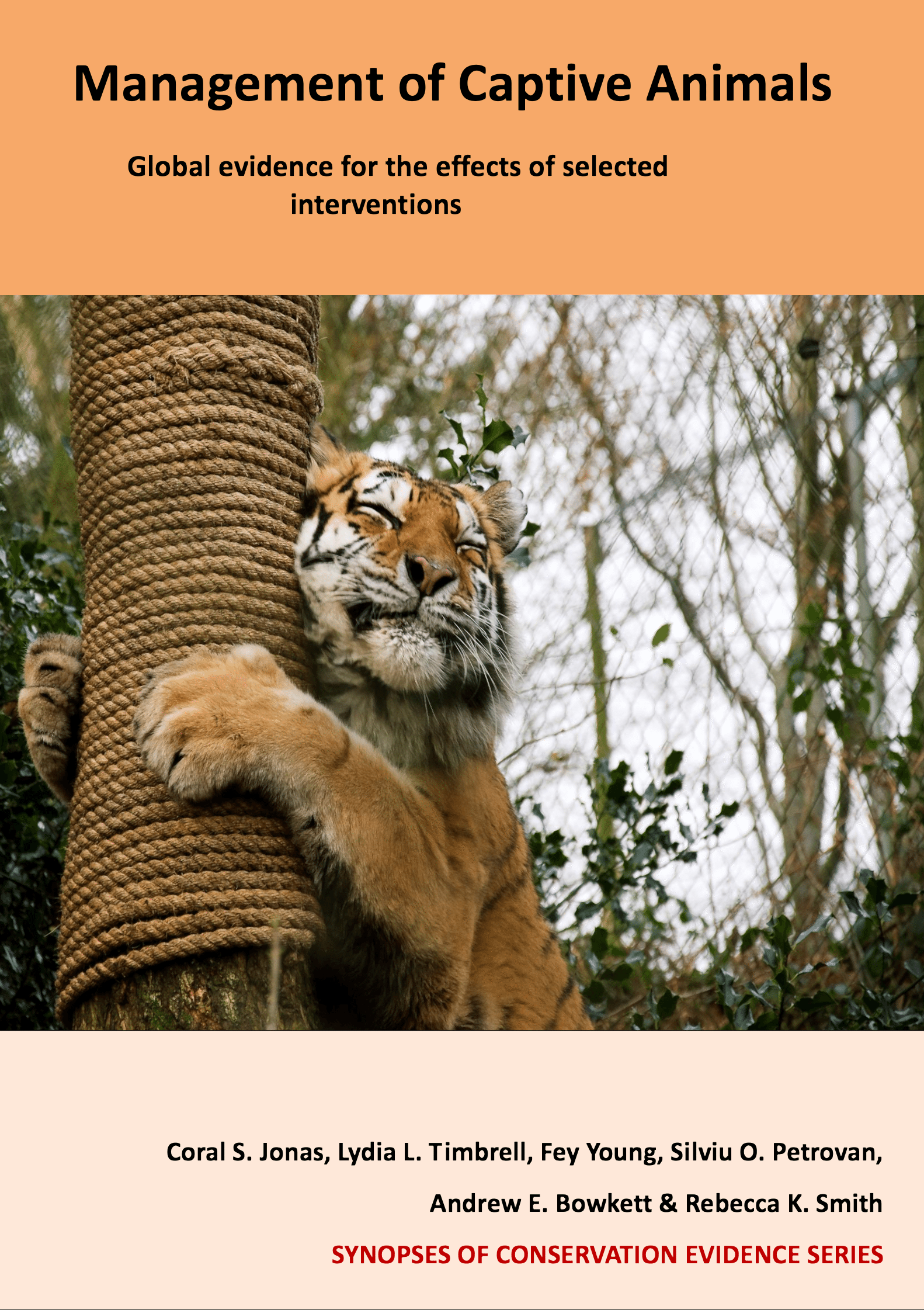Amphibians: Vary enclosure temperature to simulate seasonal changes in the wild
Overall effectiveness category Unknown effectiveness (limited evidence)
Number of studies: 2
View assessment score
Hide assessment score
How is the evidence assessed?
Effectiveness
50%Certainty
35%Harms
0%
Study locations
Supporting evidence from individual studies
A small, before-and-after study in 1993 of parsley frogs Pelodytes punctatus at Genoa University, Italy found that one of six females bred following filling an egg laying pond with water and a drop in temperature from 22 to 17°C. Immediately after the drop in temperature and filling of the pond, mating and egg laying occurred when none had occurred previously, no statistical tests were carried out. One clutch (500 eggs) was produced and hatched in a separate tank. Thirty-one tadpoles were obtained from the wild in 1993. Tadpoles were housed in a 400 L tank (20 cm water) and metamorphs in a 50 x 50 x 25 cm tank. From eight months animals were housed in a 120 x 60 x 50 cm glass breeding tank with pebbles, moss and a small pond which could be filled with water for breeding. In March 1995, the terrarium was temporarily moved to a room with a steady temperature (22°C), then to a thermostatically controlled chamber (17°C) in April, at the same time the pond was filled with water.
Study and other actions testedA replicated, before-and-after study in 2006-2012 in Victoria and New South Wales, Australia reported that providing a pre-breeding cooling period, along with allowing females to gain significant weight before the breeding period, separating sexes during the non-breeding period, providing mate choice for females and playing recorded mating calls, increased clutch size and decreased egg mortality in captive southern corroboree frogs Pseudophryne corroboree, although no statistical tests were carried out. In 2006 Melbourne Zoo had no cooling period (average clutch size: 21; egg mortality: 95%) In 2007-2011, cooling periods of 6-9⁰C for 31-64 days were used (average clutch size: 21; egg mortality: 85%). In 2012 a cooling period of 98-112 days at 5-12⁰C was used (average clutch size: 46; egg mortality: 27%). At Taronga Zoo the cooling period was 5⁰C for 56 days for 2010 (average clutch size: 20; egg mortality: 72%), 2011 (average clutch size: 12.2; egg mortality: 26%) and 2012 (average clutch size: 17; egg mortality: 28%).
Study and other actions tested
Where has this evidence come from?
List of journals searched by synopsis
All the journals searched for all synopses
This Action forms part of the Action Synopsis:
Management of Captive Animals
Management of Captive Animals - Published 2018
Captive Animal Synopsis




















